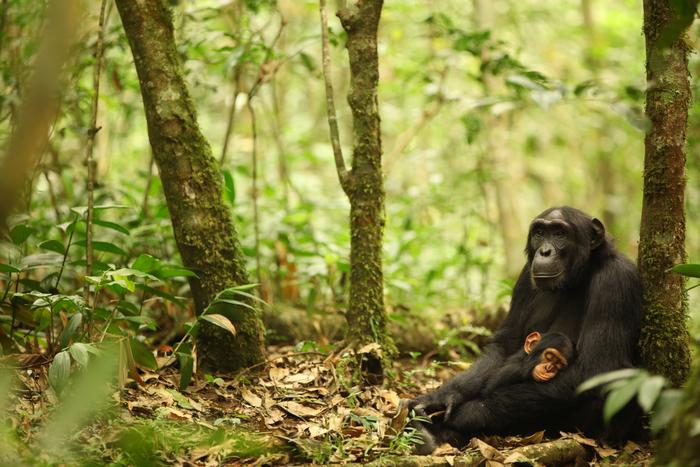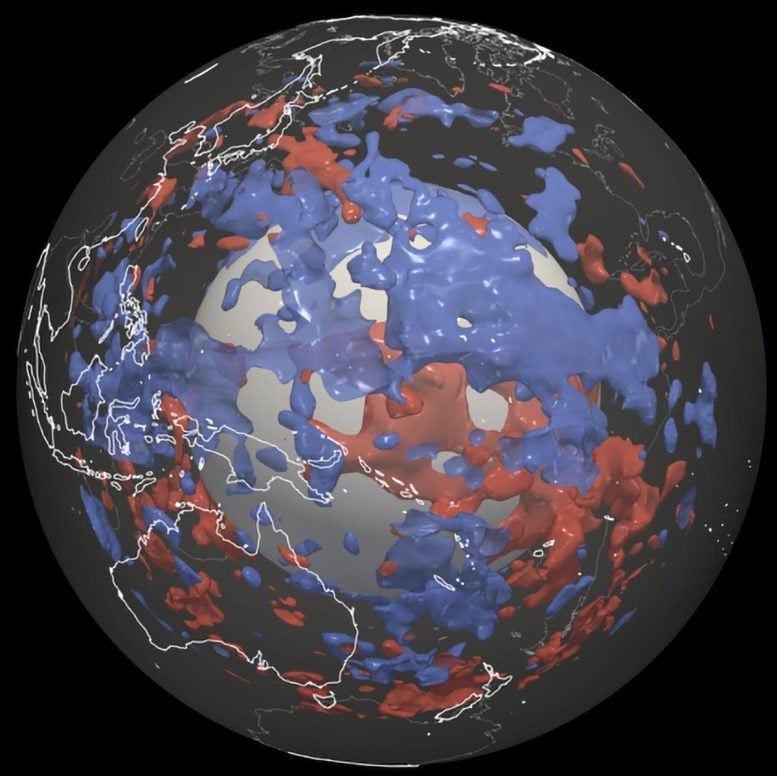New Zealand species are among the most vulnerable to extinction in a warming world, according to a global analysis of 30 years of research.
The author finds that under a projected 2.7°C rise above preindustrial levels, 1 in 20 species will be at risk of extinction globally. Amphibians; species from mountain, island, and freshwater ecosystems; and species inhabiting South America, Australia, and New Zealand face the greatest threats.
The SMC asked experts to comment
Dr Duane Peltzer, Principal Scientist, Ecosystem Ecology, Manaaki Whenua Landcare Research, comments:
“Extinction is the final, irreversible loss of a species. Whether we can avert extinctions and wider biodiversity loss is a chronic, global issue playing out over decades and centuries rather than today’s emergency. Understand the multiple drivers of extinction risk under different future climates is complex, long-term but crucially important. What Urban’s work using global data and robust modelling has demonstrated is that today’s choices result in starkly different futures for extinction risk that range from about 2-30%. Southern Hemisphere countries like New Zealand and Australia, and some taxa like amphibians, receive special attention because extinction risk appears high by global standards. More worrying is that extinction risk may be underestimated, because models require data that are available for widespread or obvious species but not for rare or undescribed species that could be more vulnerable to declines. Urban’s work starkly highlights that long-term extinction risk depends strongly on the choices and actions we make in the short term. Whether actions like developing biodiversity markets, species recovery programmes or maintaining protected areas will ultimately slow or stop extinctions is a unresolved global issue that will become increasingly important in New Zealand.”
No conflicts of interest
Dr Julie Deslippe, Senior Lecturer in Plant Ecology, Victoria University of Wellington, comments:
“Human activities are driving biodiversity loss at an unprecedented rate. Currently, the IUCN lists 46,337 species—29% of all assessed taxa—as vulnerable to extinction or worse. Among the key drivers of species decline, climate change stands out, not only for its direct impacts (e.g., drought, fires, extreme weather) but also for amplifying other threats, such as land conversion, invasive pests, and diseases.
“This paper is the most comprehensive global analysis of extinction risk from climate change to date, with detailed insights about specific locations. The findings confirm the 2019 IPBES estimates, showing that climate change already threatens 7.6% of species with extinction.
“The findings for Aotearoa are alarming. Geography is the most significant predictor of extinction risk, and New Zealand is among the few countries where climate change could drive extinction rates above 25%. Ecosystems like mountains and freshwater face the highest losses due to their many locally adapted endemic species with limited ability to migrate as climates shift. For some species, costly and controversial assisted migration strategies will become essential. Amphibians are especially at risk: nearly half of New Zealand’s native frogs are extinct with the remaining declining or threatened.
“This new evidence comes in the wake of government funding cuts to conservation research and operations. Staff reductions at the Department of Conservation, universities, and Crown Research Institutes, along with the end of initiatives like the Our Biological Heritage National Science Challenge, Ngā Rākau Taketake, and MPI’s One Billion Trees project, weaken our ability to safeguard native species. These species underpin ecosystem functions that are integral to our health, culture, and economy. Urban’s findings serve as a wake-up call: extinction is irreversible, we must act now.”
No conflicts of interest
Associate Professor Nic Rawlence, Director, Otago Palaeogenetics Laboratory, University of Otago, comments;
“If you had to pick a place in the world that was an isolated island, with alpine and freshwater ecosystems that were filled with evolutionary distinct animals including those that don’t disperse well (e.g. flightless), and have small relict and threatened populations, you’d likely guess Aotearoa New Zealand.
“Now an impressive and very sobering study published this week in the world-leading scientific journal Science has shown that these very things mean our globally unique biodiversity is at serious risk of going extinct due to human-induced climate change. New Zealand has been singled out. We are in the climate firing line and the government needs to listen.
“15.7% of Australasia’s (yes, we got lumped with Australia…again) are at risk of climate-induced extinction. The higher the projected temperature rises, the greater the extinction risk. Why?
“Our unique plants and animals can only attempt to escape the impacts of climate change so far before they run out of land, mountain side, forest or freshwater habitat. While New Zealand may be partially buffered from the effects of climate change, being an isolated island archipelago surrounded by ocean, we cannot be complacent. In the face of such sobering statistics, what can we do?
We need to conserve species most at risk (e.g. alpine rock wren, our ancient frogs, flightless birds, freshwater fish, and unique reptiles to name just a few) as there can be a long lag time between the climatic impact and eventual extinction. This lag can allow time for species to adapt to climate change, but only if we can prevent them from going extinct in the first place, often from non-climatic forces (e.g. predation, pollution, habitat destruction).
“To achieve this successive governments need to commit to and properly fund taxonomy (the science of naming biodiversity….we can’t save what we don’t know we have) and conservation. Sadly, the current coalition government is loath to do this.
“Globally, society also needs to keep temperature rises to less than 1.5 degrees. According to the new study, <2% of species globally would be at risk…however, that is still a sobering, very conservative estimate of >160,000 species.”
No conflicts of interest
Associate Professor Jonathan Tonkin, Rutherford Discovery Fellow, School of Biological Sciences, University of Canterbury, comments:
Contact: +64 20 4173 1909, jonathan.tonkin@canterbury.ac.
“This comprehensive study uses meta-analysis to analyse the findings of hundreds of previous studies that have predicted the potential extinctions of species in response to climate change scenarios. The results are stark, showing that extinctions will accelerate rapidly if global temperatures exceed 1.5°C. The more extreme climate change, the more species will go extinct, but these extinctions are biased to certain regions and species.
“From an Aotearoa New Zealand perspective, it’s particularly concerning is that NZ is one of those high-risk regions. It is said that, based on current information, species at greatest risk “most likely will live in South America, Australia, and New Zealand.” However, it is difficult to know without further in-depth analysis of the paper how many NZ studies are actually included in the study as NZ studies were lumped together with Australian. Australia and NZ have very different native biodiversity and are subject to very different pressures from climate change, particularly related to changing frequencies and magnitudes of extreme climatic events.
“On that note, the results are dependent on the underlying studies that have been summarised. A large proportion of the studies underlying this meta-analysis are based on approaches that associate species’ current ranges with climate variables and then extrapolate these forward. These often miss the nuances associated with changing climatic variability, particularly related to extreme events like droughts, floods, and heatwaves. So the results could be underestimating the risks many species face. The author found that adding more realism into models with advances that have come in recent years can change the predicted risks.
“Nonetheless, the results are extremely concerning for NZ and the world. And as the author states, these predictions are a lower bound, with predicted risks likely to increase as we continue to uncover hidden biodiversity around the world.”
No conflicts of interest
Our colleagues at the Australian Science Media Centre also gathered comments
Distinguished Professor Bill Laurance is Director of the Centre for Tropical Environmental and Sustainability Science at James Cook University
“It’s an amazing study—massive in scope. It suggests that we’re moving ever more rapidly toward a future in which global warming plays a key—possibly even dominant—role in driving species extinctions around the world.
“If I were a young person, I’d think twice before bringing kids into the world. All evidence suggests environmental calamities are going to play an ever-increasing role in the future, taxing our economies, our jobs, our health, and our quality of life.”
No conflicts of interest declared
Professor Brendan Wintle is a Biodiversity Council Lead Councillor and Director of the Melbourne Biodiversity Insititute at the University of Melbourne.
“This is an important global synthesis of evidence about the drivers of species extinction. The study increases our certainty about what has caused recent past extinctions and what will cause future extinctions. Australia and New Zealand are highlighted as hotspots of climate-mediated extinction risk because of the limits to species movement opportunities, interacting with past and current habitat destruction. Mark Urban finds that climate change will play an increasingly important role as a driver of extinction and must be minimised to save species.
“Even if we can limit global warming to 1.5 or 2 degrees, Australia’s threatened species need strong habitat protection laws, urgent recovery actions, and habitat restoration to cope with climate change and avoid extinction.”
No conflicts of interest declared
Dr Noel Preece is an Adjunct Associate Professor at James Cook University, an Adjunct Associate Professor at the Research Institute for the Environment and Livelihoods at Charles Darwin University, and Director of Biome5 Pty Ltd – an environmental management and consultancy for Northern Australian businesses.
“Global and regional warming has already affected species, so this study is timely.
“An extreme heat event reaching 42°C in 2018 killed 23,000 endangered Spectacled Flying-fox and their babies in the Wet Tropics of far north Australia. This was around one-third of their already endangered population.
“The extreme heat event in 2018 was the first mass death event of Spectacled Flying-fox, and more extreme days are expected under current climate change scenarios.
“The Spectacled Flying-fox could not escape this extreme heat because it formed to the west and moved over the Wet Tropics coastal plain like a suffocating warm blanket. The animals were trapped between the mountain range to the west and the warm Great Barrier Reef Lagoon.
“Extreme events increase in severity with mean temperature increases, so species that are susceptible to extreme temperatures will be affected severely. Average temperature increases make life less comfortable, but in extreme temperatures, discomfort can turn to death.
“Tropical faunal species live closer to their thermal limits and are expected to be more sensitive to extreme heat events than non-tropical species.
“The Cairns temperatures, in the Wet Tropics, have already increased on average by 1.3°C.”








Leave a Comment